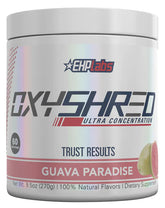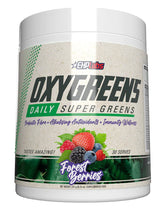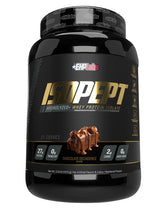How Many Calories Do I Need? (The Easy Way)
Calories. We talk about them all the time - checking food labels, tracking meals, or joking about how that dessert “was worth the calories.” But what actually is a calorie, and how many do you really need to eat each day?
Good news: you don’t need a science degree (or a calculator that makes your head hurt). Here’s the breakdown - simple, clear, and practical.
Step 1: What Exactly Is a Calorie?
A calorie is just a unit of energy.
- Food gives you calories - fuel.
- Your body burns calories - keeping you alive and moving.
You spend calories in two big ways:
- Survival mode - keeping your heart beating, lungs breathing, and brain ticking over.
- Movement mode - everything from gym workouts to walking the dog to fidgeting in your chair.
Even when you’re doing nothing, your body’s burning plenty.
Step 2: Where Do Those Calories Go?
Your daily burn isn’t one single number, it’s made up of a few parts:
BMR / RMR - Your Baseline Burn (40–70%)
Your Basal Metabolic Rate (BMR) or Resting Metabolic Rate (RMR) is the energy your body uses just to stay alive. If you lay in bed all day doing absolutely nothing, you’d still burn calories to keep organs working and cells functioning.
NEAT - Everyday Movement
Non-Exercise Activity Thermogenesis (NEAT) is the sneaky calorie-burner. Walking around, doing chores, standing at work, even fidgeting - it all adds up.
TEF - Calories From Eating (~10%)
Digesting food takes energy too! About 10% of your daily burn comes from the Thermic Effect of Food. Protein burns more to digest than carbs or fats, which is one reason high-protein diets can be helpful.
PAL - Exercise
Physical Activity Level (PAL) covers structured exercise - lifting, running, sports, classes, whatever gets you moving with purpose. This is the most “optional” bucket, but also the one that can push your calorie needs way higher.
When you add all of these together, you get your TDEE (Total Daily Energy Expenditure). That’s your daily calorie “budget.”
Step 3: A Simple Way to Estimate Your Calories
Normally, scientists use lab tests to figure this out - but let’s be real, most of us aren’t signing up for that. Luckily, there’s an easy shortcut.
Here’s the simple formula:
- Women: Bodyweight (kg) × 30
- Men: Bodyweight (kg) × 35
Let’s test it with some examples:
75kg female
75 × 30 = 2250 calories/day
100kg male
100 × 35 = 3500 calories/day
That’s your maintenance level - the amount of calories you need to eat each day to keep your weight the same.
From here, you can tweak:
- Want to lose weight? Eat about 10-20% less.
- Want to gain muscle? Eat about 10-20% more (while lifting weights).
Step 4: Putting It Into Action
Here’s the cheat sheet:
- Eat at maintenance (TDEE) - Your weight stays the same.
- Eat below maintenance - Weight loss.
- Eat above maintenance - Weight gain (ideally muscle, if training).
In Conclusion
Calories aren’t villains, they’re just energy. Once you know your ballpark number, you’ve got the power to control your results, whether that’s fat loss, muscle gain, or simply staying right where you are.
The next piece of the puzzle is macronutrients (protein, carbs, fats). Calories tell you how much to eat, but macros decide what kind of fuel your body gets. That’s where things get really fun - and I’ll cover that in the next article.
For now, remember:
- Use the quick formula.
- Adjust by 5-10% if you’re not seeing results.
- Don’t overthink it - your body is smarter than any calculator.
Editor’s Picks
OxyWhey by EHP Labs
- $68.90
$89.90- $68.90
- Unit price
- / per
Gold Standard 100% Whey by Optimum Nutrition
- From $71.90
$85.90- From $71.90
- Unit price
- / per
OxyShred by EHP Labs
- $61.90
$79.90- $61.90
- Unit price
- / per
OxyGreens by EHP Labs
- $46.90
$57.90- $46.90
- Unit price
- / per
IsoPept by EHP Labs
- $74.90
$99.90- $74.90
- Unit price
- / per















